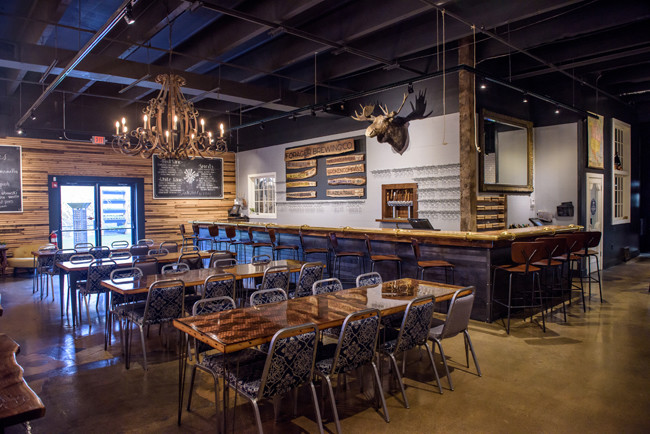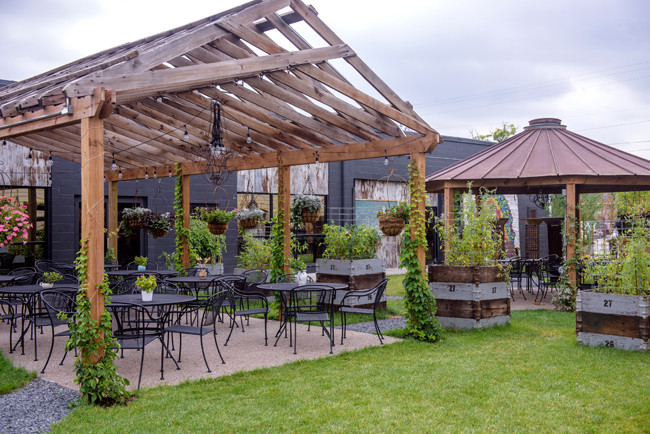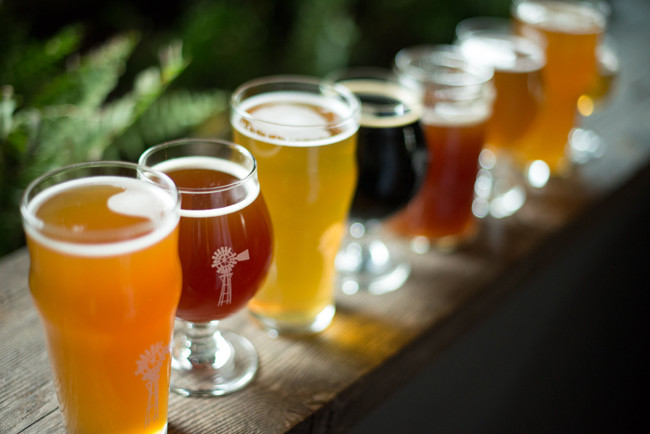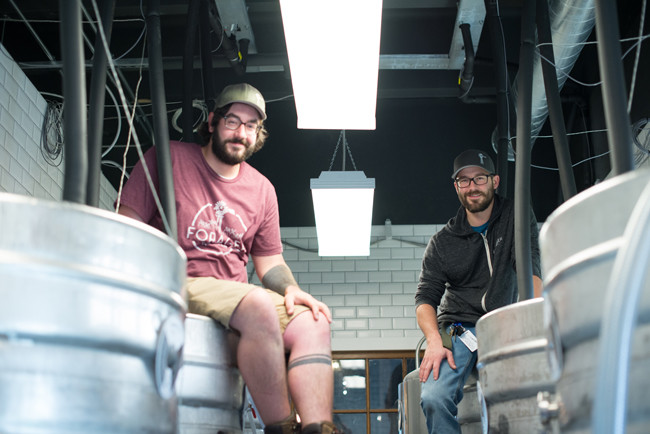
Rochester is often overlooked, despite being the third largest metro area in the state – behind St. Paul but ahead of Duluth. Between the Mayo hospital system and major technology players like IBM, the city and surrounding metro area keeps more than 200,000 people busy.
When it comes to dining and nightlife, though, locals are quick to point out that the situation is a bit dim. Sure, there are a few bright spots that attract locals and travelers alike, but for the most part, driving to the Twin Cities for a celebratory dinner is not uncommon.
In the last few years, growth of breweries has been steady, but behind other major cities in terms of growth rate. Three years ago, the city’s only beer production was taking place at Kinney Creek, which has received mixed reviews from visitors. The scene has gotten more crowded within the last year, however, with the opening of Grand Rounds Brewpub, LTS Brewing, and, as of August, Forager Brewing Company.

Where many new breweries claim to “reinvent traditional styles” or “craft well-known beers with a new twist” while presenting little of value, Forager promises nothing beyond ingredients found around them. Their sense of identity is convicting. Foraging, as the brewery name indicates, is the basis of what head brewer and co-owner Austin Jevne is most passionate about.
Jevne brings extensive brewing experience from his time at Wisconsin’s Rush River Brewing, but also a love of horticulture from his time as a DNR creel clerk (a stream and angler surveyor). While interviewing fishermen and spending time outdoors, he was led to knit his two passions together by adding foraged ingredients to beer.

After searching for a space, Jevne, along with co-owners Jillian Abbott, Annie Henderson, and Sean Allen, elected to create the Kutzky Market, a unique confluence of commerce and community. The market, which is adjacent to downtown, contains a coffee shop, commercial kitchen, retail space, and Forager Brewing, which has a full restaurant.
The space is remarkable and inviting. The market looks like an approachable version of Martha Stewart’s Pinterest page with a farm-chic bent. It is the most beautiful brewery design that we have ever encountered, and that includes the outdoor beer garden. In the case of Forager, it actually is a garden. Hops adorn the fences, vegetables and flowers spring up in a mix that is both tamed and unbridled.

During our visit, about ten beers were available. Very few foraged items were present in the current beers, but several beers were in the pipeline with more local ingredients. Unfortunately, no flights or half pours are offered, so tasting is a bit cumbersome. With a broad range of styles and little description, ordering feels like shooting an arrow blindfolded. The good news is, each beer we tried was very good to excellent. The bad news? Pricing and sizing is befuddling.
For a refreshing and unique choice, opt for the Preserved Gose ($5 for 5.5oz). It has a perfectly crisp finish plus the mineral notes expected in the style. The stunning pink color is a result of hibiscus and the spice arises from coriander. The tiny pour, however, doesn’t seem appropriate in terms of alcohol content or price.
On the more substantial side is the Forest Nymph ($5 pint), a saison made with rye. While still crisp, there is significant body that helps it stand up to heavier foods. The play between Belgian yeast and rye is remarkably nutty and spicy.

Blaze a Trail ($5 pint) takes advantage of fresh hop season (meaning hops that are added fresh rather than dried) and is a beautiful example of what the potent plant is capable of. Hops from a nearby farm were handpicked by the Forager team and added deep passion fruit and lime components. During our visited, we were invited to join in the picking for the next batch while drinking the present one. The body and clean finish were incredible, making it one of the best fresh hop beers our team has sampled.
There are several obvious questions about the implementation of foraged-ingredient beer. How will the beers stay consistent? Will there be enough ingredients for large batches? Most are answered by the fact that Jevne (below right, with assistant brewer Zack Dunbar) says that the brewery isn’t interested in distribution or large-scale production. He takes pride in seasonality, change, and creativity. Although there will be a few “flagship” beers, most of the batches will have frequent tweaks based on season and the bulk of the tap list will change regularly.

Moreover, Forager seeks to educate customers about beer and brewing, and therefore values the brewpub model. Jevne himself often works behind the bar between brewing shifts to gather feedback and talk to customers.
Food choices also proudly showcase locally sourced ingredients; large chalkboards boast local apples, heirloom tomatoes, and mushrooms. Partnerships with nearby farms are also displayed prominently.
Although pizzas make up much of the menu, choices span widely from classic to innovative, often in combination, as with the Kimchi Mac and Cheese. Check the specials board, though. That’s where we found the Chicken of the Woods Risotto – an unexpected hit. Risotto that’s not overdone is hard to come by, but paired with buttery mushrooms, it was more than well-executed, it was cravable.
Some service elements at Forager missed the mark. The arrival and seating process is a bit awkward to navigate as no signage guides guests, and bar staff was too busy to offer help.
Forager holds more promise than most new breweries in part because of its strong identity, but even more because of Jevne’s dedication to helping both the enthusiast and the novice enjoy craft beer. Food and beer is enjoyable and the warm environment makes it hard to leave.
Forager Brewing, 1001 6th Street NW, Rochester, MN; 507.258.7490; Mon-Fri 4 p.m. – 11 p.m., Sat-Sun 11 a.m.-11 p.m.

